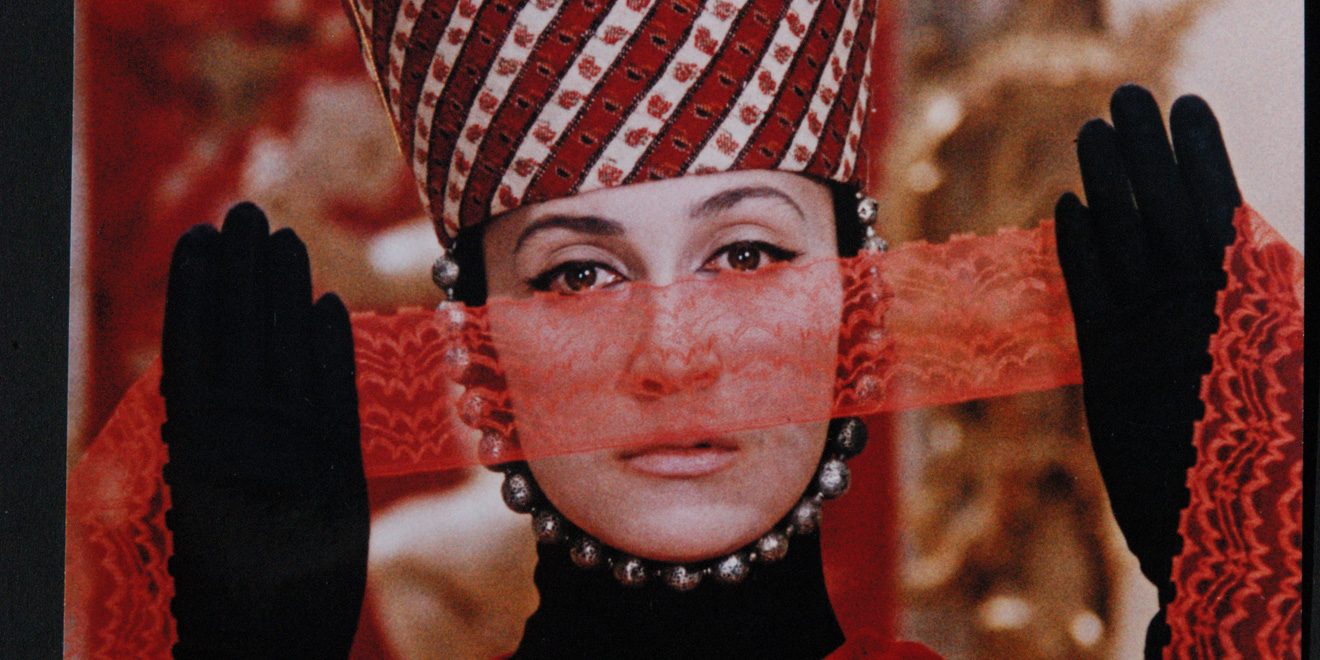Sergei Parajanov’s newly restored “The Color of Pomegranates” is a film about the life and poetry of Armenian poet and musician Sayat Nova. I would be lying if I said I know of the poet, know anything about poetry or know what is happening in the film. Despite my confusion while watching the movie, I was under the impression that I was in the presence of something magnificent. The film delights in unspoken meaning and invites close analysis of its frames, costumes, movement and imagery.
The film begins with shots of Nova’s texts. (Nova’s poetry plays a vital role in the film — it divides the film into “chapters” — ironic since neither films nor poetry have chapters and yet …) These frames, which show the poems written on pages, are very flat. In other shots, Parajanov layers people and objects, spreading them throughout the space of the frame in deep focus. He usually employs wide shots, rarely going close except to examine a religious object or blanched face. He allows the viewer to soak in all of the imagery and begin to dissect what is being said with his arrangement of people in space, their objects and the clothes they wear.
Wardrobe plays a larger role in this film than it does in “The Lion, the Witch and the Wardrobe” — actors are constantly changing costume, disrobing, veiling themselves with clothes or … veils and metamorphosing in-and-out of clothes. Clothes cover the dead, surround the living and conduct color. The second shot shows pomegranates seated on a cloth; their red dye seeps throughout the fabric like sharpie on a piece of paper. Costumes also function to establish character, allowing viewers the opportunity to recognize distinct personages in densely packed shots.
Alongside wardrobe, movement is another item that Parajanov utilizes to differentiate individuals and generate meaning. By movement, I do not refer to camera movement, since the camera remains static for the majority of the film, save for a few pans. Throughout the film, characters perform ritualistic and trancelike processions, swaying their bodies this way and that, moving an object in relation with another. In watching this film, I found myself reading these motions as much as I did reading the pieces in the frame. A man will rotate a human skull toward the camera while he lifts his hands above his eyes. Is this a motion indicative of the poet’s reflections on death? A woman raises a gun to the air and fires, somewhere on the screen someone is hit, though she did not aim at them. This I still cannot decipher, yet its recurrence throughout the film and the consistency with which the moment is captured in each instance seems to suggest a larger theme is at play. This image and ones like it invite a rereading of the film, just as one might reread the poem. Throughout, these movements coincide with equally esoteric tableaus of rotating idols, lambs filling a church, instruments and frames within frames.
Parajanov’s film is comprised of myriad images and symbols, one of them being pomegranates and their color — red. Yet, Parajanov is particularly preoccupied with religious imagery, spaces and thematic content. Many of the poems that start each chapter directly address God — perhaps a Christian god. In addition, the movie takes place in churches and in monasteries. The monastic setting adds more layers of depth to each scene — layers that involve the poet’s life, lifestyle and persecution, and layers that intensify the sense of suffering.
Before I depart, I’d like to reaffirm that I really can’t even begin to digest this film. It is a work of poetry, of film, of sculpture and of ethnography, and to begin to attack it from one angle then uproots aspects of the other, resulting in something fruitless and incomplete, at least as far as I am concerned. This movie is that good. For those with an inclination toward this poetic filmmaking style, Parajanov’s film is a masterpiece. Alas, I lack the proper facilities and ethos to write about this film in more detail than description. In Nova’s own words: “… grief, grief, grief …”
Contact Maxwell Menzies at bugzone ‘at’ stanford.edu.
